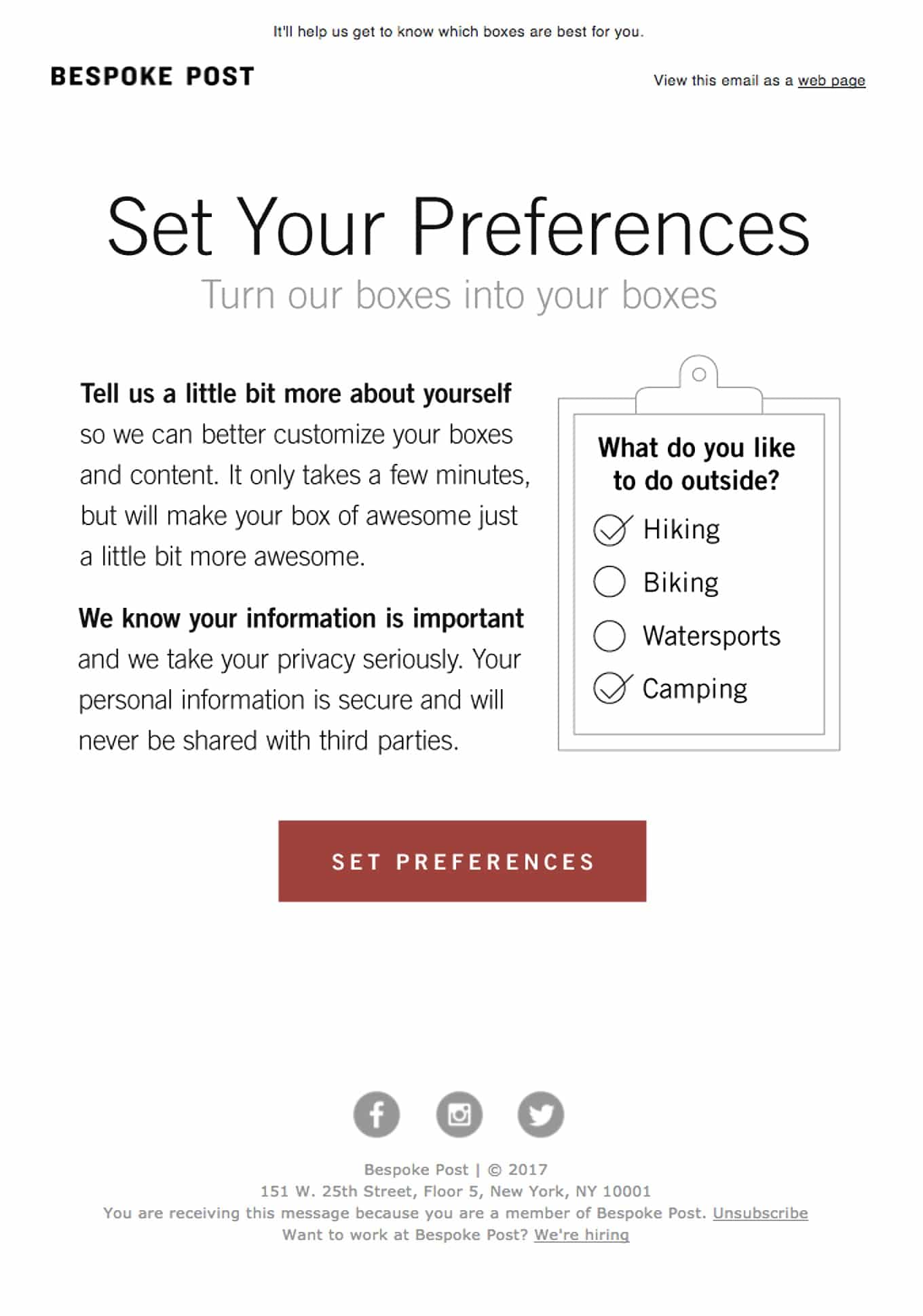Understanding the challenges is one of the best places to begin when working on your email strategy. Knowing the common pitfalls that others have struggled with helps you to plan ahead, allowing you to build an approach that addresses those issues long before you come face to face with them.
When it comes to digital marketing, 38% of organizations state that they have a specific strategy integrated into their overall marketing strategy. Forty-five percent of organizations state that they’re attempting digital marketing practices, but they have no defined strategy.
Source: Smart Insights
Digital marketing is an umbrella term that covers a wide variety of different types of marketing. Email marketing is currently the most profitable strategy for those looking to optimize ROI, as it averages $38 in returns for every $1 spent. If you don’t understand the importance of an email strategy, you won’t see the returns you’re aiming for.
Why understanding email strategy is vital to your marketing success
In 2018, the total number of email users worldwide topped out at 3.8 billion users, and that total is only expected to grow. In fact, by 2020, that number is expected to hit nearly 4.0 billion, easily.
Source: Statista
With numbers like those, it comes as no surprise that 93% of B2B marketers use email to distribute their content to their audience members. However, it’s crucial that your team not only understands what an email strategy is, but how to avoid common problems that others face when building them.
5 Problems marketers face when building an email strategy
An email marketing strategy is one of the best ways to increase engagement with your target audience. Most consumers prefer to hear from their favorite brands via email, but, when implemented correctly, a solid email marketing strategy should lead to more website visits and higher overall conversion rates.
In this guide, we’ve compiled a list of 5 of the most common challenges that marketing teams often face when building their email marketing strategy.
1. Planning for potential email strategy roadblocks
Marketers are left blindsided by potential email strategy roadblocks due to a lack of planning. However, a lack of email marketing rules and regulations also plays a role. While many marketing professionals understand that there are rules and regulations set in place to protect consumers, they don’t always stay up to date on these roadblocks.
This was made apparent when the General Data Protection Regulation (GDPR) went into effect in May of 2018. Marketers were left worrying about the state of email marketing because they didn’t take the time to go through and analyze the regulations. Many believed that the GDPR would be the end of email marketing as we knew it. However, it helped marketers by giving them the proper criteria to find consumers who genuinely wanted to be a part of their email list.
But GDPR isn’t the only set of regulations marketers must consider. In fact, regulations have been released over the years, around the world:
To read more about the regulations and how they may pertain to you, check out our blog post about global email regulations.
2. Unclear goals can derail any email strategy
When it comes to understanding email strategy, one vital piece of the puzzle that’s often overlooked is the creation of detailed goals. Having detailed goals for your email marketing strategy is essential to the success of your strategy. You’ll want to have individual goals for each of your campaigns. However, if you don’t set one for your overall strategy, then how can you set up campaign goals that’ll benefit your marketing strategy as a whole?
To set detailed goals for your marketing strategy, you’ll want to implement the S.M.A.R.T goal-setting strategy.
By following these guidelines for SMART goals, you’ll be able to create actionable goals that benefit your marketing strategy as a whole. Remember, you don’t want to neglect any of the outlined steps; otherwise, you can end up missing out on vital pieces of your overall strategy.
3. Implementing an omnichannel approach into your email strategy
Marketing professionals understand the importance of having multiple marketing platforms. However, many brands have yet to adopt a truly omnichannel approach.
An omnichannel approach provides a seamless user experience across all your marketing channels. The difference between this approach and a multi-channel approach is simple:
- Multi-channel approach – refers to having multiple channels that act independently of each other.
- Omnichannel approach – takes the best aspects of each of your marketing channels to create a unified customer experience.
An excellent example of an omnichannel approach can be using your email marketing to advertise your loyalty program. They’d click on the CTA sign up, which would take them to a landing page. Once they’ve completed the signup process, they may have access to their account in several different locations, including:
- In-store
- Online
- Via a mobile app and more
A great example of a brand which has developed an omnichannel approach is Walgreens and their Balance Rewards program.
Source: Walgreens
Once a customer has signed up, they can use their rewards and view their account in many different locations. They can also connect various apps to help them continue earning rewards outside of purchasing items or renewing prescriptions.
This is an important step that should be included in your email marketing strategy for several reasons. Brands that utilize three or more channels in their omnichannel marketing campaigns generally see an engagement rate that’s 250% higher than those utilizing only a single channel.
If you want to see your email engagement rates increase, then you’ll want to make sure you’ve implemented an omnichannel approach. Remember, the goal is to create a unified experience, so consider all your options when choosing a platform.
4. Alienating customers with a lack of personalization
You know by now how vital personalization is in your email marketing strategy. However, marketers still lack in this area. The days when simply addressing your emails to a consumer’s name are long gone.
Consumers now expect you to pay attention to their every move. That means you have to take on a highly targeted approach to getting to know each of your consumers.
The best way to do this is by allowing your consumers to tell you more about them via an email preference center.
Source: Really Good Emails
You usually can’t ask for too much personalized information from new subscribers right off the bat. Once they’ve taken the time to opt-in to receive your emails, you can then ask them to set their preferences. This will create the most optimal experience for their individual needs.
5. Understanding email strategy means testing everything before sending
Finally, another common activity that many marketers don’t understand while developing their email strategy is to run tests before you finalize your plan.
Source: Campaign Monitor
You understand just how vital A/B testing your email campaigns can be. However, did you know that these same tests can, and should, be run as you’re developing your email marketing strategy? Instead of waiting until you’re sending out campaigns to test for optimal sending days or testing send frequency, you should be doing these with test campaigns as you define your email marketing strategy.
Taking these extra steps during the developmental stages will help you save both time and resources later on. That way, you can test for more campaign-specific material as you set up each campaign.
Wrap up
Marketers know just how vital it is to create an email marketing strategy; however, they don’t always understand email marketing strategy challenges because they assume the problems come during the individual campaign creation.
A few of the most common challenges include:
- Neglecting to plan for potential email strategy roadblocks
- Not setting clear goals
- Not understanding how to implement an omnichannel approach into your email strategy
- Alienating your customers with a lack of personalization
- Not running tests before you finalize your strategy
Are you ready to take your next email marketing campaign to the next level? Then request your demo with Campaign Monitor today!











